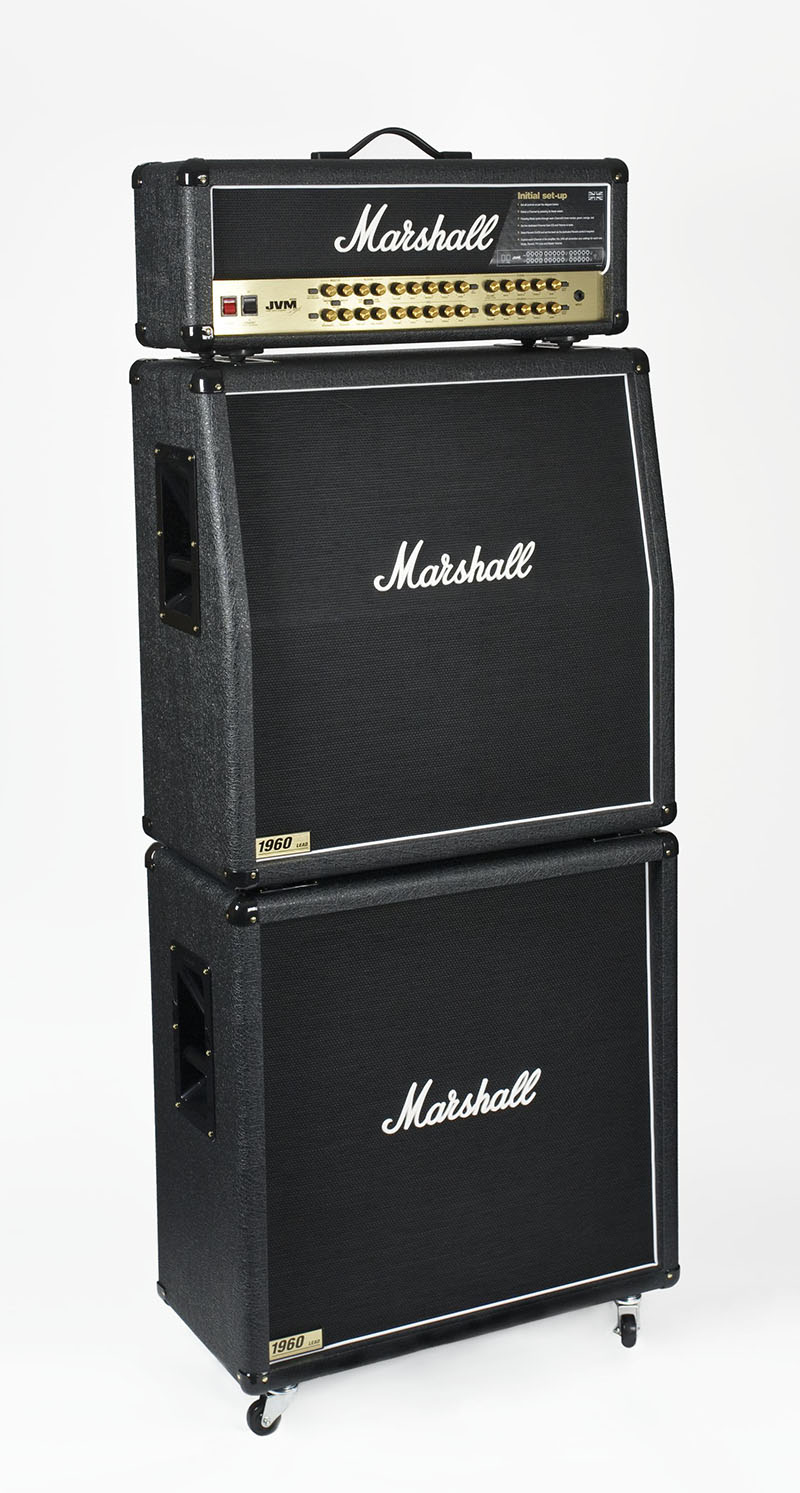
Personal history

Jim Marshall was born on 29 July 1923. His childhood was a difficult one; he suffered from tubercular bones, and spent much time in and out of hospitals, sometimes confined to a full body cast. In the early half of the 20th century, treatment for this condition was limited, and little faith must have been placed in his recovery. It would be easy to imagine someone feeling hopeless under the circumstances, or even sinking into self-pity. This was not, however, the case for Jim Marshall. Not only did he go on to recover from the condition, but went on to train as a tap dancer not long after his recovery.
It would be unfair to say Marshall was entirely unaffected by this part of his life—on the contrary, the rest of Marshall’s life shows a series of endeavours implying a drive and energy far from the cheerful calm he displayed in interviews throughout his life. We can assume that a reminder of physical limitations at such a young age when we usually feel invincible was a powerful experience for him. Marshall was certainly affected enough by the experience to donate generously to the hospital he visited at this time, and to set up a charity to help children in similar situations, after his later success.
When the Second World War broke out, Marshall’s medical record meant that he was restricted from joining the military. This did not however, appear to limit his capacity for achievement. Marshall became first a singer, then a singer and drummer as the loss of musicians to the war effort made for desperate times. By the end of the war he was a drumming instructor—several of his students would go on to be world famous drummers.
It was at around this time in his life that what was arguably Marshall’s greatest talent first began to take effect: his ability to listen to the people around him, and provide what they needed. It began, quite simply, with Marshall establishing a music shop to sell drums to his protégés. This was moderately successful, but Marshall often heard his customers say that it would be so much better if he sold guitars and amplifiers. And so he began to stock them too.
At this point, Marshall’s shop became what he describes himself as “a sort of labour exchange for musicians of the day”, and all the big names from the English rock ’n’ roll scene could be found there. And around this time, Marshall once again listened to the famous musicians that now filled his shop, and heard that all of the amplifiers on the market just weren’t made for rock ’n’ roll.
Marshall’s amplifiers
This isn’t to suggest, of course, that Marshall was the first person to build an amplifier. Fender had already built and was selling one, though it wasn’t yet in widespread use. Marshall originally took his ideas to his shop engineer, who referred him to an apprentice he knew called Dudley Craven. Craven earned £4 a week as an apprentice at EMI, and was loyal to the position, right up until Marshall offered him £15 a week to make prototype amplifiers for him, while Marshall himself made the casings. By the sixth prototype, they had the sound Marshall wanted, and the amplifiers were ready to be sold. They sold 23 on the first day alone.

The amplifiers worked based on a system of harmonic tubes. The signal inputted from the guitar would be converted from AC to DC current, then passed over a grid shaped by the AC audio signal from cathode to anode in each of the tubes. The signal is then run through a tone stack, which uses a cathode follower to only allow signal within a certain bandwidth through. In short, the amplifier makes the audio signal louder, and can modify the tone and smooth out DC ripple or radio frequencies (reduces distortion of the sound) in a way specific to each amplifier.
What made Marshall’s amps different was that they were built to produce sounds specific to the style of rock ’n’ roll. They could also go much louder—when Marshall built his first amps, they went up to 10, the standard for amps at the time. When the cult classic mockumentary This Is Spinal Tap featured Marshall amps that famously went ‘up to 11’, musicians began requesting them. Soon afterwards, the company released a new range of amplifier designs that went all the way up to 20.
Legacy
Marshall always stayed entrenched in the industry he loved, which allowed him to utilise his masterful attentiveness. He listened to what tones, volumes, and effects artists wanted most to achieve. When roadies complained about transporting the equipment, he modified the Marshall towers to become the separable Marshall stacks we see are familiar with today.

Articles about Marshall from throughout his career also emphasise the contrast between different aspects of Marshall’s life—the high -lying music legends he regularly rubbed shoulders with, the handcrafted feats of electrical engineering being made in his workshop, and the homely suburban lifestyle he led at home as a family man. For all that he contributed to the rock ’n’ roll music scene, Marshall also lead a happy family life up until his death at a hospice in Milton Keynes, at age 88. Jim Marshall is perhaps summed up best by famous Guns N’ Roses guitarist Slash, who said of him:
“I consider myself very fortunate to have known the late Jim Marshall. He was such a fantastic individual. Not only did he create the loudest, most effective, brilliant-sounding rock ’n’ roll amplifier ever designed, but he was a caring, hardworking family man who remained true to his integrity to the very end. His work ethic was unequalled and his passion unrivalled.”
My grandfather’s cousin was this guy! My grandfather is called john Marshall
What an absolute legend of a man. I’m sure he will be blasting the music up in heaven.